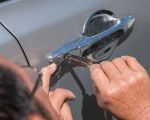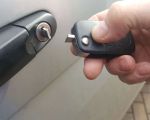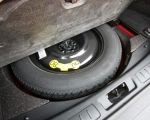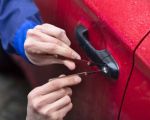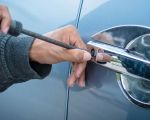How to Unlock a Car When It’s Cold Outside
We've all been there: you're in a rush, it's freezing outside, and your car door just won’t budge. Whether it’s the frost or the low temperatures causing your locks to freeze, it’s an inconvenience no one wants to deal with. I’ve had my fair share of cold weather car troubles, and one of the worst is when I couldn’t get my car door open. In this article, I’ll share my personal experiences and walk you through several proven techniques for unlocking your car when it’s cold outside—so you can get inside, start your engine, and get on your way without a hitch.

Shell
18525 N Conduit Ave, Queens, NY 11413, USA
1. Why Do Car Locks Freeze?
Before we dive into solutions, let’s quickly understand why this happens in the first place. Car locks freeze when moisture, such as rain or snow, gets inside the lock mechanism and then freezes due to the low temperatures. This is more common during the winter months, and can affect not only your car door locks but also your ignition system. In the past, I’ve had days where I couldn't get the key to turn in the lock, and it wasn’t because of a broken key, but because everything was frozen solid. This happens when the water inside the lock turns into ice, preventing the lock mechanism from functioning properly.
2. Quick DIY Methods to Unlock Your Car in the Cold
Now that we know why locks freeze, let’s go over a few techniques I’ve found to work best when you’re stuck outside in freezing conditions. These methods can save you time, money, and stress, especially if you’re in a rush to get going.
2.1. Use De-Icer Spray
One of the first tools I turn to when I can’t unlock my car in cold weather is a de-icer spray. De-icer works by quickly melting the ice inside the lock and helping it to function again. You can buy de-icer sprays at most auto parts stores or even large supermarkets. To use it, simply spray the product into the keyhole or on the affected part of the lock, wait for a few minutes, and gently try to turn your key. I’ve had great success using this method when I was stranded outside on a particularly frosty morning. It’s quick, easy, and effective, allowing me to get back inside without too much hassle.
2.2. Try Lock and Key Lubricant
If de-icer spray isn’t available, lock and key lubricant is another fantastic option to try. I’ve used this solution when my locks wouldn’t budge due to frozen mechanisms. The lubricant works similarly to de-icer, but it also helps prevent future freezing problems by creating a protective barrier inside the lock. To use it, spray the lubricant inside the keyhole and gently work the key in and out to spread the lubricant evenly. This can help loosen up any frozen parts in the lock mechanism. Just remember, too much lubricant can make the lock sticky, so use it sparingly!
2.3. Heat Your Key
If you’re in a pinch and don’t have de-icer spray or lubricant, heating up your car key can be a surprisingly effective method. I’ve done this by holding the key close to a lighter (not too close!) for a few seconds until it’s warm, and then gently inserting it into the frozen lock. The heat will help to melt the ice inside the lock just enough to turn the key. You can also heat the key using hot water from a thermos or a car heater, but be cautious not to damage your key with excessive heat. This method works well when you're in a bind, especially when you’re standing outside with no immediate access to other tools.
3. More Advanced Solutions for Stubborn Locks
Sometimes, DIY methods may not work, especially if the ice inside the lock is particularly stubborn. If you’ve tried the methods above and your lock is still frozen shut, there are a few more advanced techniques that might help you get into your car. These solutions might require a little more time or a professional’s help, but they are worth considering if the situation is becoming more urgent.
3.1. Use a Hair Dryer
If you have access to a power source, a hair dryer is another great way to warm up a frozen lock. I’ve used this method on more than one occasion when I couldn’t get into my car. Simply point the hair dryer at the keyhole for a few minutes, allowing the warm air to melt the ice. It’s a great way to gradually thaw the lock and get it working again. You can also use a portable car heater if you have one, but I find that a hair dryer works well if you're at home or somewhere with an electrical outlet nearby.
3.2. Call for Roadside Assistance
If none of these methods work, or if you don’t want to risk damaging your car’s locks, it may be time to call a professional. In my experience, having a towing or roadside assistance service on hand has been invaluable. Roadside assistance services like Rescue & Towing can send a technician to your location to help unlock your car without causing any harm to the locks. In cold conditions, they may have access to specialized equipment, such as lockout tools or a portable battery jump starter, to get you back on track quickly. I’ve been in situations where I was stuck in freezing temperatures, and I was able to call for a quick tow or locksmith service to avoid further frustration.
4. Preventing Frozen Locks in the Future
If you’ve had issues with frozen car locks in the past, it’s a good idea to take some preventative measures to avoid the same problem in the future. After all, nobody wants to go through the hassle of being locked out in cold weather again.
4.1. Apply Lock Lubricant Regularly
Regularly applying lock lubricant can prevent ice buildup and ensure your locks function smoothly, even in freezing conditions. I make it a habit to lubricate my car locks every few months, especially before winter sets in. This helps to minimize the chances of a frozen lock and keeps my car’s locking system in top condition. Additionally, if you live in an area that experiences particularly harsh winters, consider investing in a special winter lubricant made specifically for freezing temperatures.
4.2. Use a Lock Cover
Another useful tip is to protect your locks with a cover. Lock covers are small, inexpensive items that prevent snow, rain, and ice from accumulating in your keyhole. I use these covers on my car, and they’ve worked wonders in keeping the locks dry and free from moisture. You can easily find them online or at an auto parts store, and they’re a great investment to help you avoid lock issues during winter months.
5. When to Seek Professional Help
If you’ve tried everything and your lock still won’t open, or if your car key is stuck in the ignition or the lock itself, it’s time to call for professional help. As mentioned, Rescue & Towing offers services that can quickly get you out of a jam. A certified locksmith or roadside assistance professional can use specialized tools to unlock your car without causing damage. Sometimes, it’s better to let an expert handle the situation, especially if you’re concerned about damaging your car’s locking mechanism.













